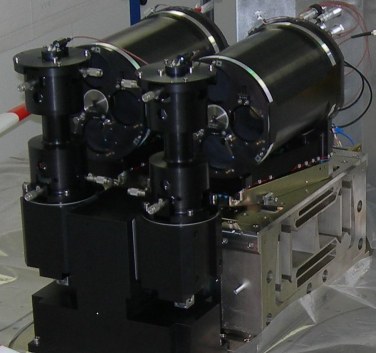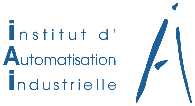The DDL is procured by a consortium managed by the Observatory of Geneva, and including EPFL, CSEM, the Haute Ecole ARC and the Max Plank Institute for Astronomy in Heidelberg.
The IAI provides the system engineering and integration support.
The DDLs represent one subsystem of PRIMA, the Phase-Referenced Imaging and Micro-arcsecond Astrometry facility of the VLTI. The main idea of VLTI-PRIMA is to observe simultaneously two objects, a target and a reference, through the same interferometer.
A top-level breakdown of the VLTI-PRIMA consists of:
- two telescopes (either UTs or ATs) and their Coudé trains;
- one star separator per telescope to inject simultaneously two objects of the telescope’s focal plane into separate beams of the Delay Line (DL) associated to this telescope;
- one DL with two channels per telescope to compensate for the varying Optical Path Difference (OPD) between the two telescopes introduced by the changing projected baseline due to the Earth rotation;
- one DDL per telescope and per object to compensate for the differential OPD variations between the target and the reference star;
- one detector per object, either two FSUs or an FSU plus an instrument (Amber, MIDI)
- the PRIMET metrology to track the internal differential OPD variations between each arm and for each object of the interferometer.

DDL assembled at the Observatory of Geneva
The advantage of observing simultaneously two objects is twofold: first, it allows removing the effects of atmospheric turbulence (piston variations) on the target object by stabilizing the fringes on the reference object, or vice versa. Second, one can remove systematic phase errors introduced by the atmosphere, the telescope and the instrument, by carrying out differential OPD measurements between target and reference.
Both assume that the error on OPD is affected by the same error sources and error magnitude for both objects. This requires in turn that the optical path through the atmosphere (assumption that the objects lie within the isoplanatic patch) and within the instrument is as similar as possible.
Thus, the PRIMA system is set up to use, within one interferometer arm, as much as possible the same optical paths for both objects. This philosophy is adopted whenever possible, for example in the main delay line, which carries simultaneously the beams of both objects. Only for the compensation of the phase difference of the two objects, given by their different position on the sky, their paths have to be separated. Both beams are therefore led through the differential delay lines (DDL), which take care of this phase difference.
Next:



